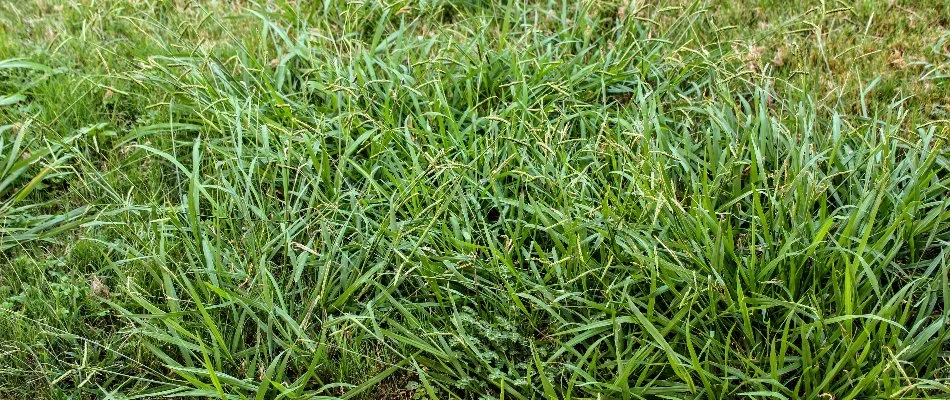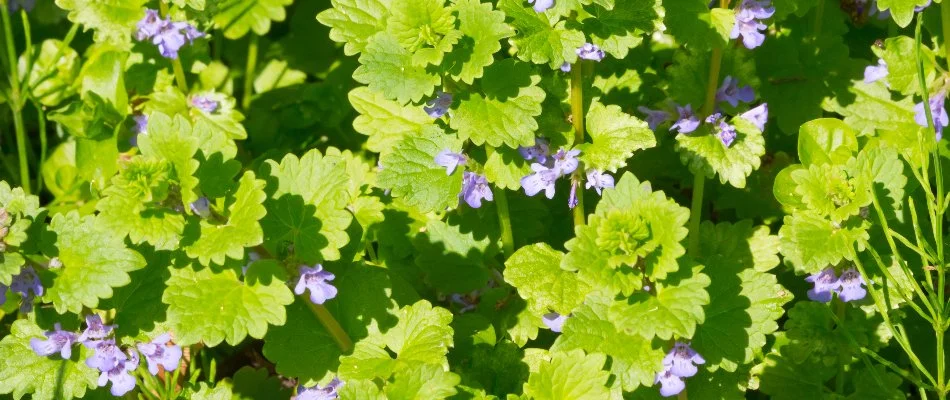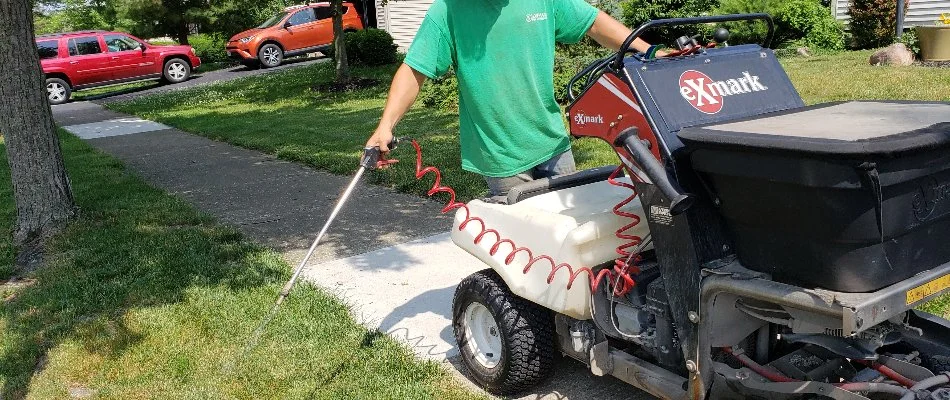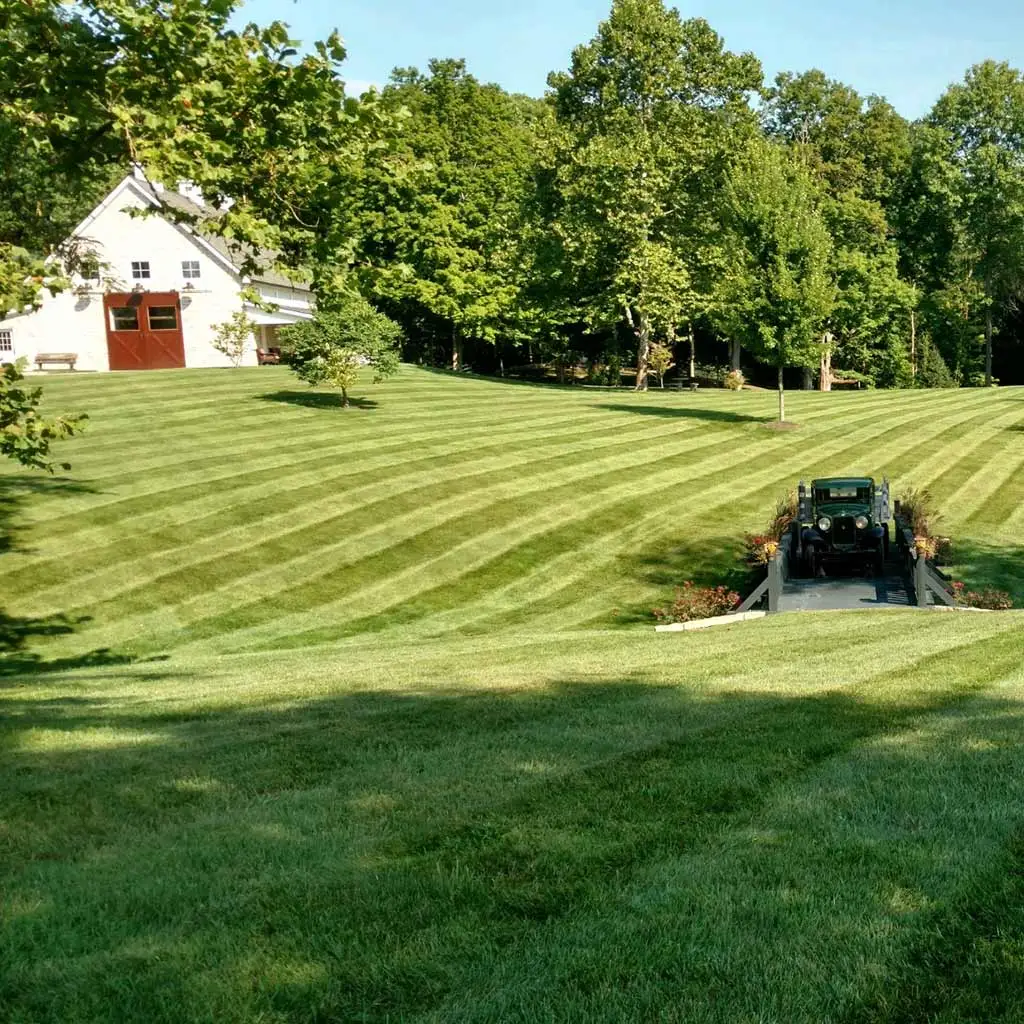Keeping weeds off of your lawn in Ohio is a crucial part of maintaining its overall health and appearance. However, different types of weeds can invade your turf, including grassy weeds like nutsedge and crabgrass, and broadleaf weeds like dandelions and clover. Grassy weeds closely resemble grass and can be difficult to distinguish, while broadleaf types are more noticeable, with wider leaves that grow in different directions. To effectively control both types of weeds on your property, you should sign up for a professional weed control program. When you do, professionals will apply pre- and post-emergent treatments to prevent new weeds from sprouting and eliminate any existing growth. They'll also utilize these treatments several times throughout the year to provide consistent coverage against both grassy and broadleaf weeds.
What are grassy weeds?

Grassy weeds closely resemble grass with more narrow leaves and rounded or flattened stems. They are monocots, meaning a single seed grows a leaf instead of multiple stems. Nutsedge and crabgrass are common examples of grassy weeds, and while they may look similar to regular grass at first glance, closer inspection reveals some key differences:
- Nutsedge: This weed has flat, round stems and waxy, dark green leaves that stand upright and form dense clusters. It tends to grow faster than other types of weeds and is often found near sidewalks, driveways, and shaded areas.
- Crabgrass: This type of weed has coarse, light green leaves that branch out from the center, resembling crab legs. This weed thrives in hot, sunny environments and spreads rapidly.
What are broadleaf weeds?

Broadleaf weeds usually have wider, broader leaves that grow in different directions and have veins that branch out across the leaf. These weeds are easily noticeable on lawns since they don't blend in with the grass. Some common broadleaf weeds include:
- Dandelions: Dandelions have bright, yellow flowers and long, thin leaves with toothed edges that grow opposite each other along the stem.
- Clover: Clovers have small, white flowers and heart-shaped leaves with three lobes.
- Creeping Charlie: Creeping Charlie spreads by creeping stems that stretch out across the ground with colorful blooms.
What's the best way to control grassy and broadleaf weeds on your lawn?

To effectively manage both grassy and broadleaf weeds on your lawn, you should sign up for a professional weed control program. With this type of service, pros will visit your property to apply pre- and post-emergent treatments. Pre-emergents work beneath the surface to stop newly germinated weeds from breaking through the soil and growing any further. Meanwhile, post-emergents target actively growing weeds above the ground
Not only that but pros will also apply weed control treatments several times throughout the year to stay on top of both grassy and broadleaf weeds. That's because weeds are relentless when it comes to taking over your lawn, so you need to ensure there is no opportunity for them to thrive.
Call us today to enroll in our weed control service!
If you want to say goodbye to unsightly weeds on your lawn, then we are the team to turn to! At Hoffmans Lawn & Fertilization, we offer a weed control service that includes both pre- and post-emergent treatments applied 6 times between early spring and late fall to prevent new weeds from surfacing and eliminate any existing ones on your lawn. We proudly serve residential and commercial properties, as well as HOAs, in Delaware, Lewis Center, Powell, and nearby areas in Ohio. Call us today at (740) 318-5296 to enroll in our top-notch weed control program and enjoy a beautiful, weed-free lawn!




Comments (0)
Thanks for your comment!
Thanks for your feedback! Your comments have been successfully submitted! Please note, all comments require admin approval prior to display.
Error submitting comment!
There is a problem with your comment, please see below and try again.